May 24, 2025 | 16:23 GMT +7
May 24, 2025 | 16:23 GMT +7
Hotline: 0913.378.918
May 24, 2025 | 16:23 GMT +7
Hotline: 0913.378.918
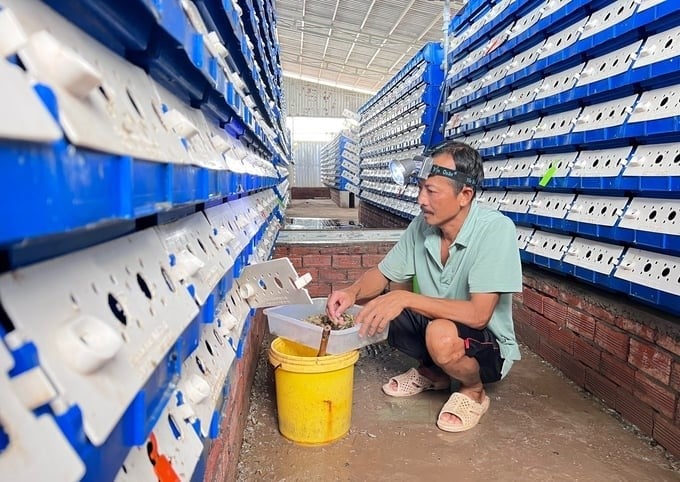
ST Crab Farm, Vinh Tan commune, Vinh Chau town, Soc Trang province, owns about 10,000 plastic boxes, developing a model of raising brick crabs, double-shell crabs, and soft-shell crabs. Photo: Kim Anh.
Over many years, the crab farming model has developed quite stably in coastal areas or areas with low salinity, affected by brackishness and salinity in the dry season and freshness in the rainy season, such as the on-farm areas of My Tu and My Xuyen districts, Vinh Chau town (Soc Trang). Among them, Vinh Chau is the locality with the largest sea crab farming area in the province, with about 700 hectares.
However, most of this area uses the method of stocking in ponds, with sparse density, so the economic efficiency is not high. On the other hand, raising sea crabs from artificial breeds, using industrial feed, raising them in earthen ponds, etc. has revealed limitations in survival rate and disease when the crabs are 2.5–3 months old. The main cause is bad water quality and salinity fluctuations.
Recently, some farms have improved farming methods, raising crabs in plastic boxes, thereby contributing to significantly improving the survival rate, quality, and value of commercial sea crabs.
ST Crab Farm in Vinh Tan commune, Vinh Chau town, has invested 10,000 plastic boxes to develop a model of raising brick crabs and double-shell crabs, especially soft-shell crabs. Mr. Phan Thai Phap, technical officer of the farm, said that soft-shell crab meat has high nutritional value and is favored by consumers. Meanwhile, the product supply is not abundant, so the development potential of the model of raising soft-shell crabs in plastic boxes is still very large.
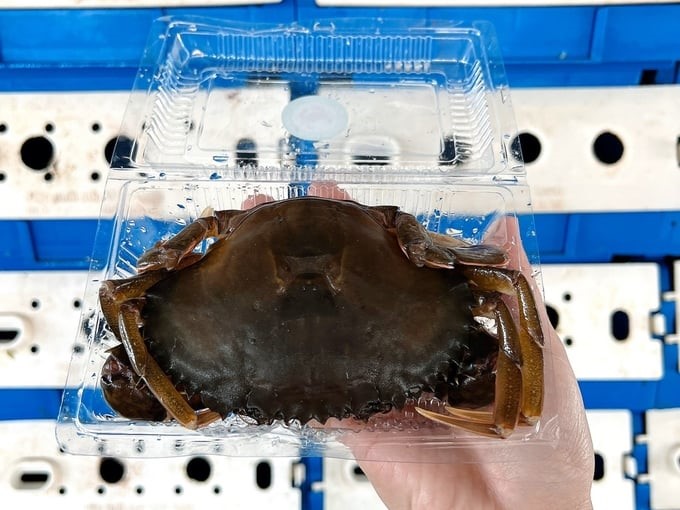
After molting, the crabs are guaranteed to be alive, canned immediately, and stored in the freezer to maintain quality. Photo: Van Vu.
In terms of economic efficiency, the price of soft-shell crabs is currently 2-3 times higher than that of meat crabs. On average, each month, the farm sells about 1 ton of soft-shell crabs at a price of around VND 600,000/kg. After deducting investment costs, the model brings quite high and stable profits of 40–50%.
To ensure optimal efficiency, ST Crab Farm also raises soft-shell crabs in a semi-circular manner. With this form, natural water sources will be supplied to the storage pond, and after settling and filtered for a certain period of time, they will continue to be supplied to the treatment pond and put into the circulation pond.
From here, water will be supplied directly into the boxes used for crab farming. The advantage of this farming method is that it takes advantage of natural water sources of high salinity. Plastic boxes containing crabs are placed directly on the shore, so care and management are much more convenient. Crabs molt naturally instead of using stimulation methods, so meat quality is always guaranteed.

The shells molted from crabs can be used to puree them as food for crabs and some other aquatic species, providing high nutritional content. Photo: Van Vu.
According to Mr. Phap, for the model to develop sustainably, in addition to understanding techniques, farmers need to pay attention to mastering the farming process. To do this, there must be a linkage between farming households to ensure the source of reserve crabs for production, as well as stabilize the supply of goods for consumption linkage establishments and units.
The model of raising soft-shell crabs in plastic boxes does not require much care and has a diverse food source, mainly wild trash fish.
Normally every 20 days, crabs will molt once. Therefore, to harvest products and preserve them promptly to maintain quality, farmers need to check, monitor, and promptly classify when crabs show signs of molting.
"When checking, if the crab shows signs of molting, farmers must keep watch, not letting the crab molt for too long because the meat content in the crab is no longer as delicious as before. After the crabs finish molting, farmers put the crabs in a plastic box. If packaging soft-shell crabs, it is compulsory to choose a time when the crabs are still alive and healthy to keep the crab meat content at the maximum level," Mr. Phap shared about soft-shell crab farming techniques.
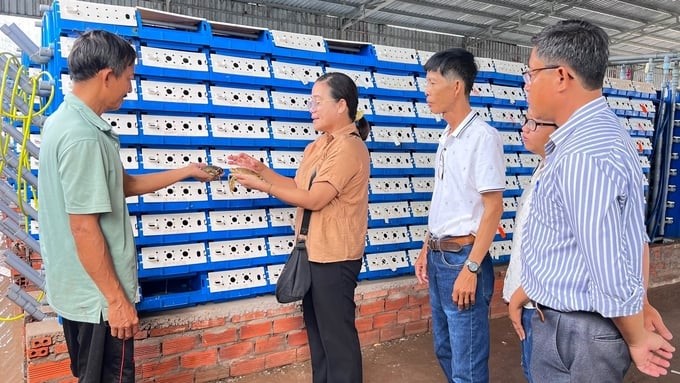
The technical staff of the Soc Trang Provincial Agricultural Extension Center guides farmers through the technical process to develop a model of raising soft-shell crabs in plastic boxes. Photo: Kim Anh.
Currently, to obtain soft-shell crabs, ST Crab Farm is applying two methods. One is to let the crab molt naturally at the appropriate time. Two is to stimulate the crab to molt by cutting its claws and swimming legs.
However, each method has its own advantages and limitations, so the farming facility recommends that farmers monitor and observe crab weight to determine the most suitable method.
According to Ms. Lam Anh Tien, Deputy Head of the Technical Department (Soc Trang Provincial Agricultural Extension Center), some techniques that farmers need to pay attention to are clean water sources suitable for crab growth and the appropriate salinity for soft-shell crabs, which is 20–25‰. In addition, farmers must develop methods to treat and control stable water quality. Especially, farming ponds, crab nursery ponds (tanks), and a system of farming boxes with circulating water supply and drainage need to be fully arranged.
Besides, it is necessary to ensure the amount of reserve crabs from farming ponds or collected in the wild. It is also required to have on-site sources of fresh food such as mussels, shrimp, and trash fish. Regarding feeding methods, people can feed crabs the amount of 2–4% of the crab's body weight.
Regarding the technique to stimulate crabs to molt by cutting their claws and swimming legs, the agricultural extension sector advises farmers to put the crabs in the nursery tank for 5-7 days to ensure the crabs are healthy, operate actively, and have quick reflexes. Then cut the crab's claws and legs with a sharp object or a pincer and leave only the pair of swimming legs to stimulate the crab to molt.
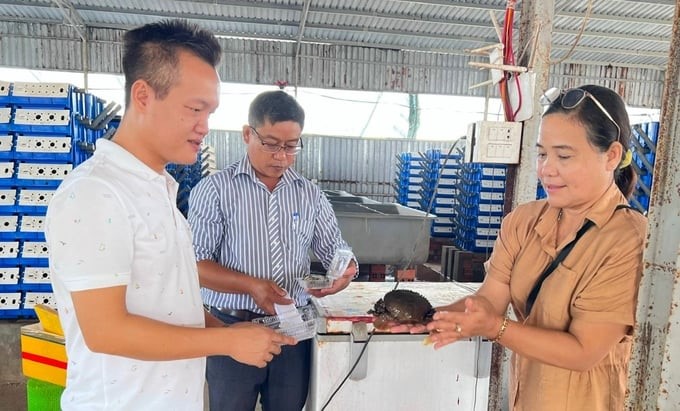
To successfully implement the method of letting the crab molt naturally, farmers need to choose crabs of the same size and uniform in shell strength. Photo: Van Vu.
According to Ms. Tien, when applying this method, people should choose crabs of small size (50 g, 80 g, or 100 g) so that molting occurs quickly. After 15 days, the crabs can get on the shell and prepare to molt. Farmers monitor the double-shell crabs regularly to harvest soft-shell crabs.
Besides, during the farming process, farmers stock crabs at a density of 20–30 heads/m2. In addition, crabs can be placed in individual plastic boxes, raised in ponds, or on indoor systems to make monitoring the health, nursing period, and harvesting of soft-shell crabs easier.
As for the method of letting the crab molt naturally, Ms. Tien noted that farmers should choose crabs of the same size and uniform in shell strength. Stock crabs into plastic boxes at a density of 1 head/box. The advantage of this method is that farmers can obtain soft-shell crabs with large weight and big, intact legs and claws, so the value is high. However, the disadvantage is that the farming time is long and the crabs do not molt at the same time.
Translated by Thu Huyen
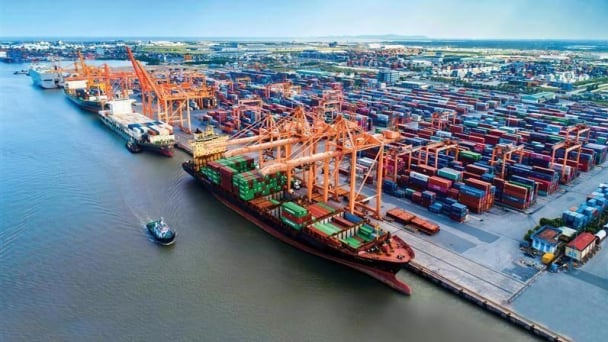
(VAN) South Korea is currently the second-largest investor in Hai Phong in terms of the number of projects (186 projects) and the largest in terms of total registered investment capital, reaching USD 14.2 billion.
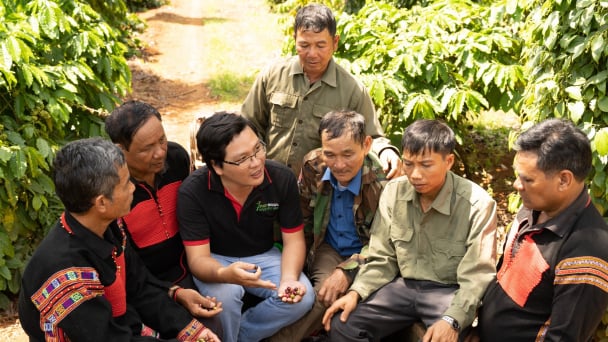
(VAN) As consumers become more environmentally conscious, legal regulations grow increasingly stringent...
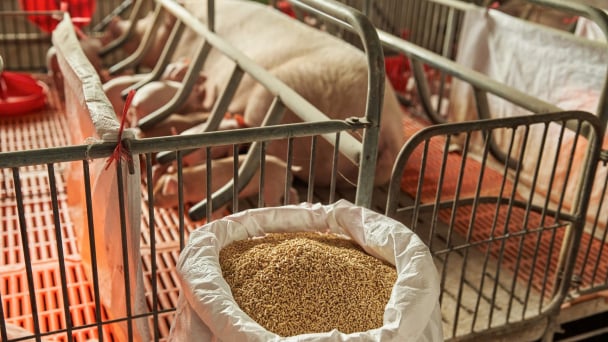
(VAN) CJ Feed&Care officially launched the FCR improvement campaign called “2025 Find Challenge Reach” in April 2025. In Vietnam, this campaign is implemented by CJ Vina Agri.
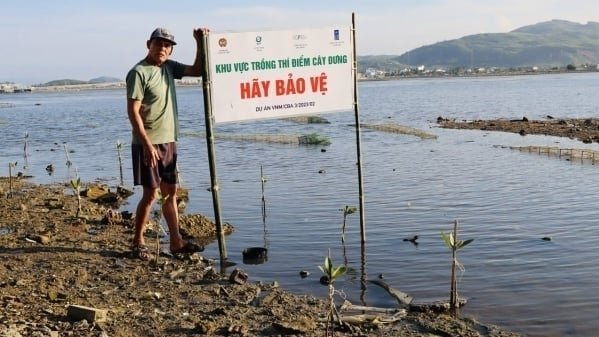
(VAN) The swamp in Pho Thanh is gradually being covered with red mangrove, creating a favorable environment for producing clean, high-quality salt.
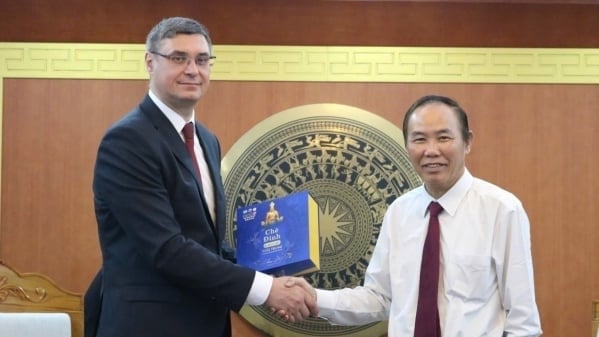
(VAN) The trade turnover of agro-forestry-fishery products is growing significantly, along with investment cooperation commitments that are opening up new development directions between Vietnam and Russia.

(VAN) Khanh Hoa is investing over 545 billion VND to develop 240 hectares of high-tech marine aquaculture in order to guarantee a consistent supply of seafood exports and achieve the USD 1 billion target.
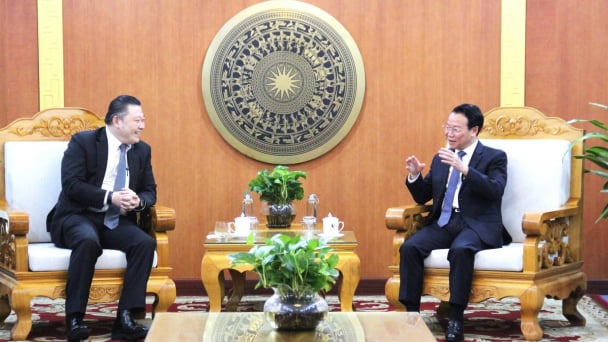
(VAN) Minister of Agriculture and Environment Do Duc Duy held a meeting with Soopakij Chearavanont, Chairman of C.P. Group, on May 15.